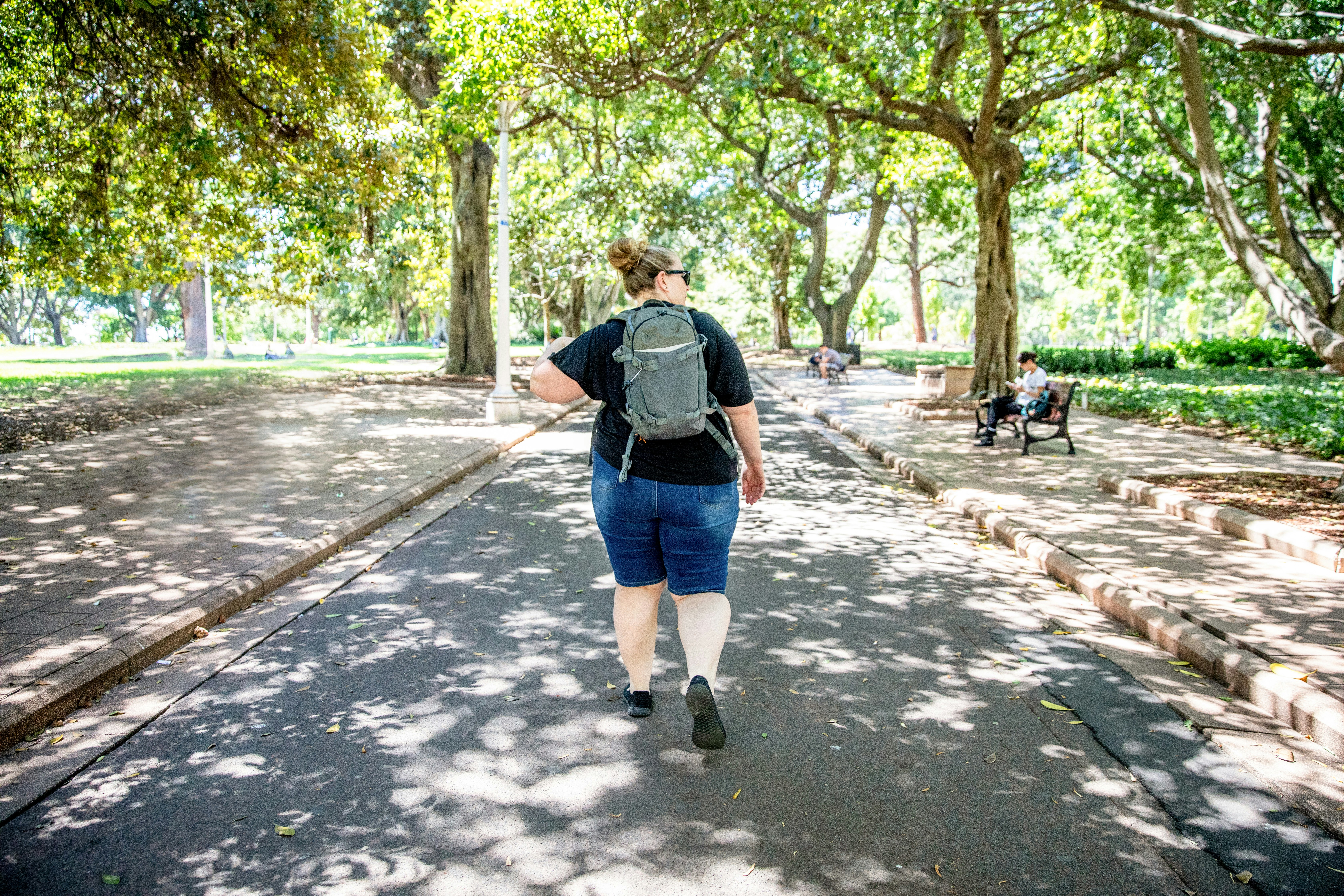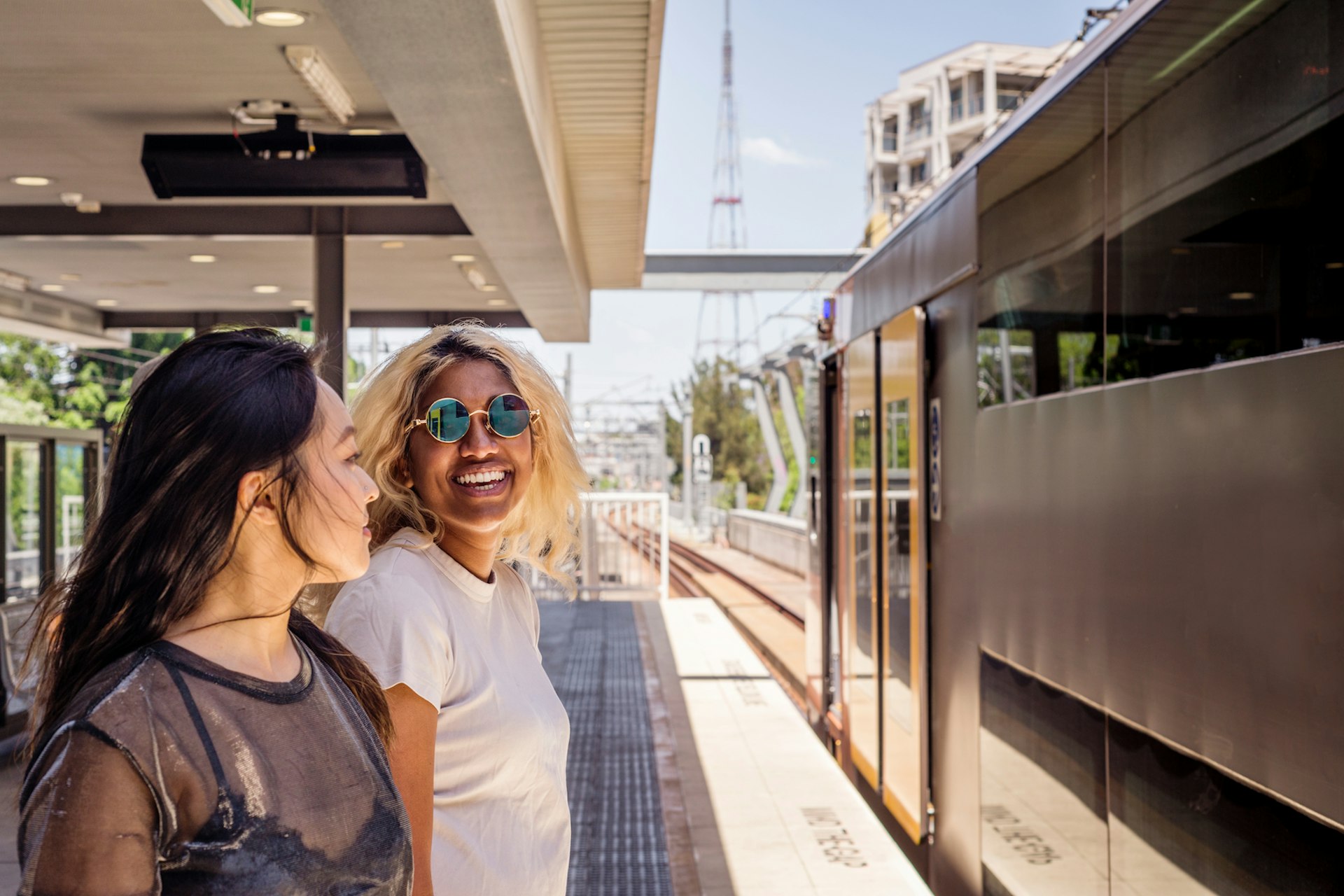Sydneysiders, like most Australians, are genuinely friendly people – they just want visitors to have a good time and take fond memories with them when they go home. That said, there are some things to know about visiting one of Australia’s most intriguing cities.
Before it became Australia, this continent was home to around 500 separate First Nations; Sydney is on the traditional lands on the Gadigal people of the Eora nation. Plan at least four days here, depending on the length of your trip and what else you hope to see. A week is better, but of course, the longer you stay, the more you’ll experience in this stunningly located and hugely cosmopolitan place.
Here are some tips to help you make the most of your time in the Sydney, from packing lists to planning logistics to local etiquette.
1. There’s no need to overpack
You won’t be embarrassed if you dress up or dress down in Sydney. Sydneysiders are stylish, but they prefer to keep it casual, like they’ve stepped off a yacht on the way to the opera.
It gets cool in winter, but not heavy coats kind of chilly – a warm pullover or light jacket should suffice unless there’s an unusually cold snap. (With that being said, visitors from cold-weather countries that are used to insulation and central heating may find it cold indoors in the winter. A pair of slippers won’t go astray.) Summer is hot and humid. Pack an umbrella no matter what time of year you visit: rain is a given in this subtropical coastal city. Ideally, don’t bring a plain black one (we explain why later).
2. The best places should be booked in advance
Much of what you will do in Sydney will depend on the weather, so too much pre-planning may result in last-minute itinerary changes anyway. You probably won’t go kayaking from Manly to a secret beach in high winds, and those rooftop sundowners are less fun in a heavy downpour.
That said, if there are any destination restaurants you really want to go to, such as Quay or Oncore by Clare Smyth, book at least a few months ahead. The best accommodations will also get snapped up, especially in high season (the Australian summer months of December to February), so get that sorted as soon as possible.
3. People really are friendly
Sydney may be on a par with London, New York and Paris when it comes to big cities with big reputations. However, it seems that the combination of sunshine, space and an outdoorsy waterside lifestyle has made Sydneysiders generally happy and friendly – most of the time. Be prepared to be asked all manner of personal questions whether you’re waiting for a bus or picking up some supplies at the local store. If you’re used to living somewhere where people mind their own business, it may take you a few days to thaw out but you’ll soon find yourself smiling at everyone you pass on the Bondi to Bronte walk, or asking a stranger “what’s in the bag?” like a local.
4. Tips for taking public transport including ferries
Let everyone off before you attempt to board a ferry, including the inevitable stragglers, as the gangways are slim. If you want to take photos and wander around the outside deck on the ferry, go for it – but be mindful that for locals, this is their normal daily commute, and travelers clambering over them to get a great shot will be annoying.
Make sure you have your Opal or contactless bank card ready to tap at train station gates or when boarding and alighting from buses. In general, locals aren’t too keen on people talking on mobile phones on public transport. Stick to texting.
5. Do not drop any litter… seriously!
If you want to be hated by the locals, drop some litter at the beach, on the street or in nature. Australia launched an anti-litter campaign, Keep Australia Beautiful, in 1968 that is still going strong. If you smoke cigarettes, take your butt with you. Bins are sorted into recycling or general waste, so “do the right thing.”
6. Honesty systems are sacred
Honesty systems work well in Australia. If it’s raining and you take that quality umbrella to a local bar, you can dump it in the umbrella bucket (or on the floor nearby if that’s overflowing), and it will still be there when you leave the bar two hours later. However, plain black umbrellas tend to all look the same, so bring something bright and distinctive.
7. Swearing is not intended to offend
It might be considered uncouth or rude to swear in many English-speaking countries, but in Australia, it’s fairly normal. Even Australian parliamentarians are known to drop a swear bomb. That said, the “So where the bloody hell are you?” tourism campaign by the Sydney office of M&C Saatchi Group caused some controversy when it launched in 2006.

8. Yes, you can drink the tap water
It’s fine to drink tap water in Sydney. If there’s any danger of contamination, you’ll hear about it: it’ll be a major national news story.
9. Natural disasters and extreme weather are a genuine concern
Australia is at the coalface of climate change (see what I did there?) and extreme weather events, even if the reason why is still open to debate in some places.
In summer, there’s a risk of wildfires, and with its many pockets of forest in and around the city of Sydney, your trip could be impacted by the direct danger of fires or by smoke particles in the air. During the 2019 and 2020 Australian bushfire season, 42 million acres of forest across southeastern Australia burned and left glaciers in New Zealand grey from falling ash.
A famous poem – “My Country” by Dorothea Mackellar – describes Australia as a land of “drought and flooding rains.” Sydney has had its fair share of the latter – 2022 was the wettest year on record, with flash flooding affecting the city.

10. Protect yourself from the sun and the heat
Use sunscreen, even in winter. The sun is hotter and sharper down under. A sunhat is an even better idea in the scorching summer heat, and take plenty of water if you’re walking anywhere. Look up the symptoms (and treatment) of heatstroke if someone you know is feeling unwell in the sun: quick action is essential.
11. Swim sensibly and don’t take risks
Don’t get into any body of water alone, from surf beaches with rip currents that can drag you out to sea, to rivers, lakes and ponds that can have currents or obscured obstructions. Always swim between the red-and-yellow flags at a surf beach, which signifies lifeguards are on duty. They’ll place these in the safest area of a beach.
In 2021, 294 people drowned in Australia, out of a total of almost 1000 “drowning incidents” (in other words, non-fatal but still harmful and scary), which was a significant increase from the year before. Know your skill level and play it safe.
Oh, and there are jellyfish. If you get stung, rinse with water or vinegar (the latter is usually available at a surf lifesaving club).
12. A word on scams, theft and pickpockets
As mentioned, Sydneysiders are super friendly which can also lead travelers to let their guard down too easily. There’s no need to be paranoid, but keep your caution and wits about you when interacting with strangers, especially ones who approach you.
As in any big city, don’t wander around with valuables on display and don’t leave your phone or bags unattended. Generally, though, it’s pretty safe here.
If you receive text messages with links to a website, no matter how convincing (i.e., your credit card needs verification) never click on the link. Online scams are very sophisticated, especially when you’re jet-lagged or simply in unfamiliar terrain. Your bank would never send you a text with a link.
13. In case of emergency, dial 000
Call “000” and you’ll be asked what service you need – police, ambulance or fire. Lifeline’s telephone crisis support is available on 13 11 14 (24 hours a day, seven days a week).
